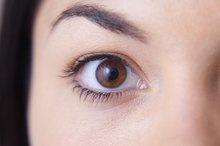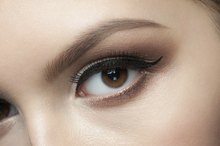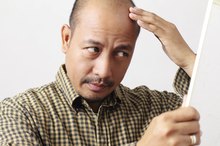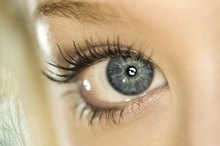How to Repair Eyebrow Loss
Eyebrow loss can occur as a result of overplucking, genetics, nutritional deficiencies or accidents such as burns. Medical treatments such as chemotherapy or changing hormones that occur during menopause and pregnancy can cause eyebrow loss as well. This type of hair loss is very noticeable because eyebrows are a prominent facial feature. Normal eyebrow growth takes about six to eight weeks. In some cases of eyebrow loss, such as overplucking or hormonal changes, eyebrow hair will grow back on its own. However, it is possible to speed the process or stimulate growth in more permanent eyebrow loss cases.
Take daily vitamin supplements. Eyebrow loss can be attributed to nutritional deficiencies. Look for supplements that contain high levels of protein and vitamins A and E. These nutrients encourage healthy hair growth, including eyebrow hair.
Why Do Eyelashes Fall Out?
Learn More
Apply a topical treatment containing minoxidil, which is sold under the brand name Rogaine. Use a cotton swab to apply the foam to your eyebrow area twice a day. When you begin to see hair growth, apply the foam once or twice a week. Be careful not to get the foam in your eyes.
Discuss eyebrow transplant restoration with your doctor. According to the International Society of Hair Restoration Surgery, hairs can be transplanted into the eyebrow from a donor area 2. Strips of skin that contain hairs can be grafted into the eyebrow area as well. You may qualify for a transplant surgery if any disease or medical treatment causing your eyebrow loss has been treated or resolved.
How to Make Your Eyebrows Thicker
Learn More
Hide eyebrow loss with makeup. Use a small eyebrow brush to brush your brows upward. Using an eyebrow pencil that matches your brow color, fill in the sparse areas and then apply an eyebrow powder to blend in the pencil. You can also use a stencil to draw on eyebrows that have fallen out completely. Be sure to use an eyebrow sealant gel to prevent the pencil from fading throughout the day.
Tips
Talk to your doctor if you are concerned about your eyebrow loss. If you experience eyebrow loss as a result of medical treatments, menopause or an accident, your eyebrows will most likely grow back on their own after the treatment is stopped, hormones go back to normal or your body has healed.
Warnings
Avoid plucking sparse eyebrows in order to make them match or even with one another. This can cause more damage.
Related Articles
References
- Natural-HomeRemedies.org: Eyebrow Regrowth
- International Society of Hair Restoration Surgery: Eyebrow Surgery & Eyelash Hair Restoration Surgery
- "The New York Times": After Overplucking, It’s Time to Call the Professionals
- Kim I-R, Cho J-H, Choi E-K. Perception, Attitudes, Preparedness and Experience of Chemotherapy-Induced Alopecia among Breast Cancer Patients: a Qualitative Study. Asian Pacific Journal of Cancer Prevention. 2012;13(4):1383-1388. doi:10.7314/apjcp.2012.13.4.1383
- Watanabe T, Yagata H, Saito M. A multicenter survey of temporal changes in chemotherapy-induced hair loss in breast cancer patients. PLoS One. 2019;14(1):e0208118. Published 2019 Jan 9. doi:10.1371/journal.pone.0208118
- Fingeret M, Teo I, eds. Body Image Care for Cancer Patients. Oxford Medicine Online. 2018. doi:10.1093/med/9780190655617.001.0001
- Dua, P.; Heiland, M.; Kracen, A.; et al. "Cancer-related hair loss: a selective review of alopecia research literature." Psycho-Oncology. November 2015; 26(4):438-443.
Writer Bio
Rose Welton is a journalism major and a freelance writer. Her education is focused on nutrition and early childhood studies, making her an expert when it comes to writing about health and children's growth and development. She has written numerous articles and blog posts on various topics for online publications and has also worked on an Internet news team.









